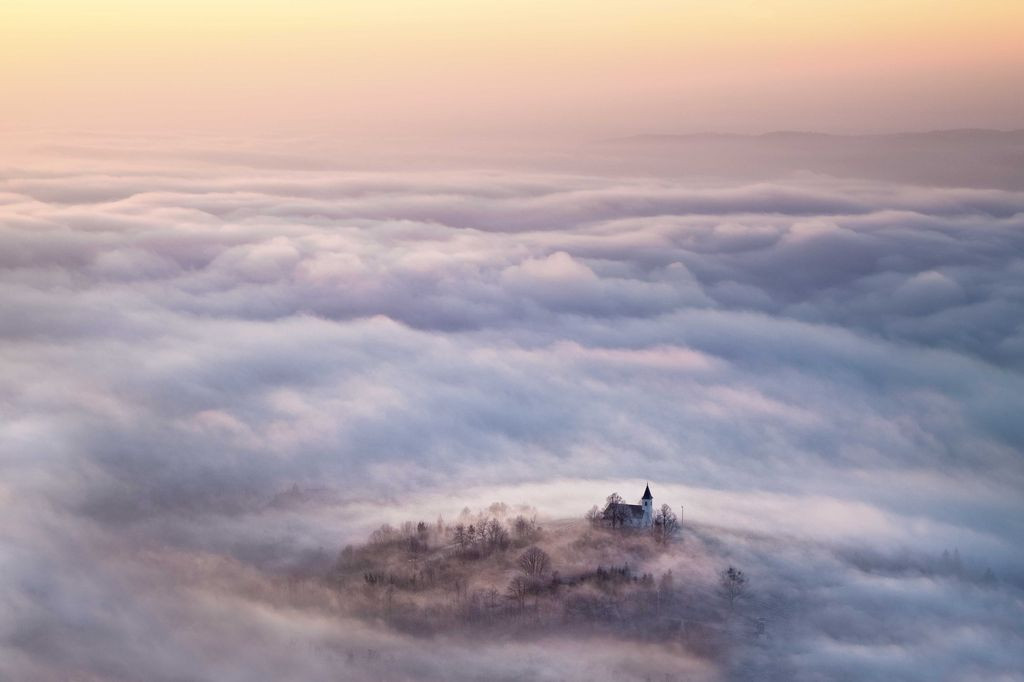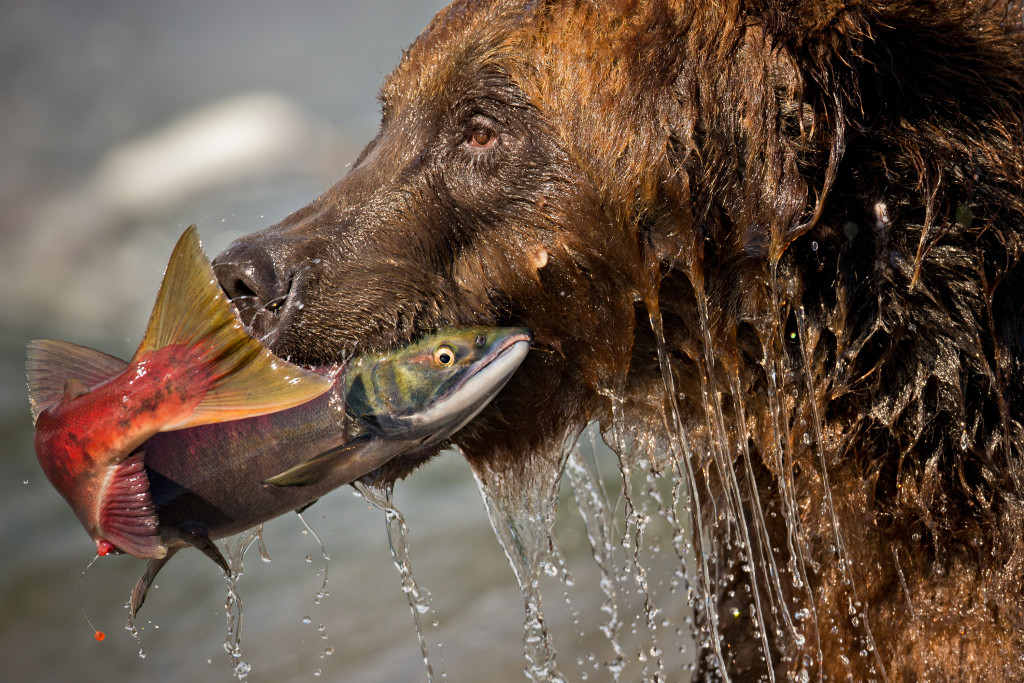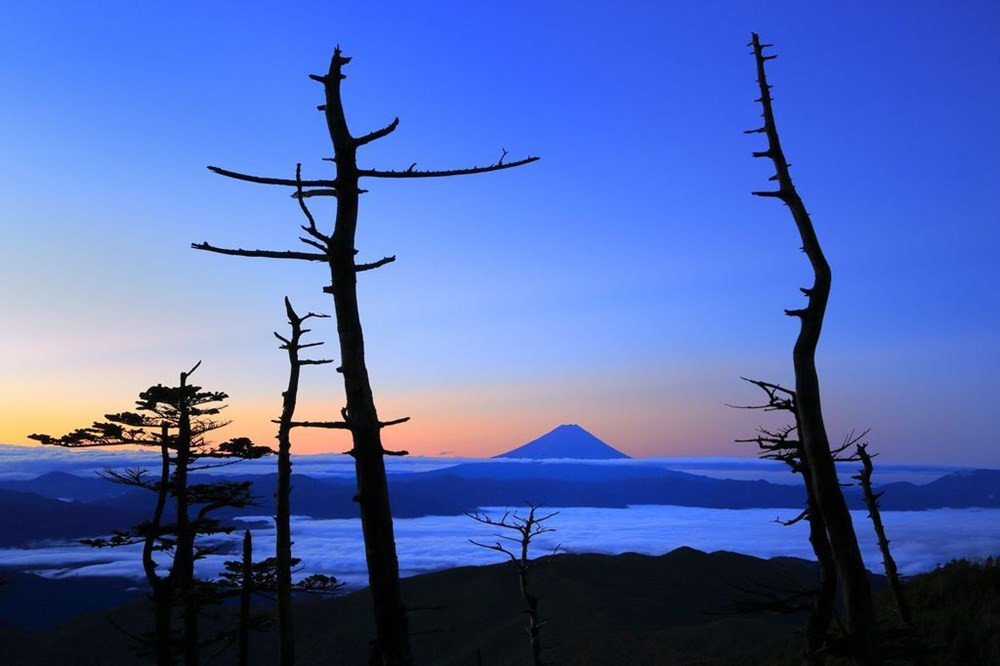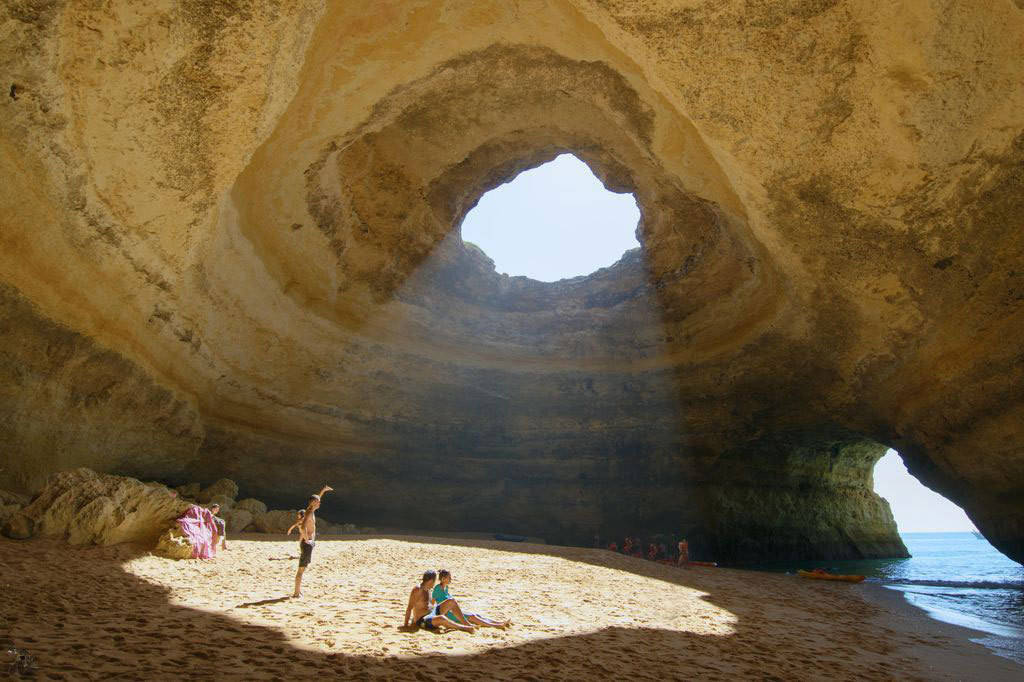A series of photos about the world of wildlife
This is a photo gallery of the wildlife world in the past week.Images such as the breakfast of hummingbirds or a scene of a salmon-brown bear in search of food are amazing images of wild animals in beautiful photos last week.
Photos taken close up can help you have the most accurate and specific view of the wildlife world around us to give you a better view of the life of these animals.Invite the Network Administrator to check out these exciting pictures.
- 10 photos showing how small people are in the ocean
 The cloudy, half-haze clouds in the middle of the house create a poetic setting for those who love nature.The photo was taken in the Lovic Prekriski countryside, Croatia. (Source: NatGeo).
The cloudy, half-haze clouds in the middle of the house create a poetic setting for those who love nature.The photo was taken in the Lovic Prekriski countryside, Croatia. (Source: NatGeo).
 Brown bears are the second largest animal in the carnivore, after the polar bear and the tiger.Adult males weigh about 400–600 kg and are 2.4–3 m long when standing upright.Female bears are much smaller in size.As omnivores, they eat a variety of different foods, including berries, tree roots and buds;mushroom;fish, salmon, insects or small mammals like rabbits, squirrels, ferrets, birds.And this is a picture of a brown bear catching the salmon while searching for food in Lake Kurile in Russia.(Source: NatGeo).
Brown bears are the second largest animal in the carnivore, after the polar bear and the tiger.Adult males weigh about 400–600 kg and are 2.4–3 m long when standing upright.Female bears are much smaller in size.As omnivores, they eat a variety of different foods, including berries, tree roots and buds;mushroom;fish, salmon, insects or small mammals like rabbits, squirrels, ferrets, birds.And this is a picture of a brown bear catching the salmon while searching for food in Lake Kurile in Russia.(Source: NatGeo).
 Hummingbirds, also known as Bee Birds, are a small bird family with very colorful feathers.All hummingbirds eat nectar.There are many species with long beak pairs (although their legs are very small) and long blades to easily dig into different flowers to extract bile.This is a close-up shot of hummingbird morning breakfast.(Source: NatGeo).
Hummingbirds, also known as Bee Birds, are a small bird family with very colorful feathers.All hummingbirds eat nectar.There are many species with long beak pairs (although their legs are very small) and long blades to easily dig into different flowers to extract bile.This is a close-up shot of hummingbird morning breakfast.(Source: NatGeo).
 Fukushima is the southernmost province of Tohoku region.It was divided by a mountain spanning three regions (West to East), divided by Aizu, Nakadōri, and Hamadōri.The Hamadōri coastal region lies towards the Pacific Ocean and is also the flatest and most temperate climate while Nakadōri is the province's agricultural center, including the capital, the city of Fukushima.The area has a lot of Aizu mountains with quiet lakes, lush forests and snowy winters.This is a picture of the snow covered the whole village, running along the Tadami river valley.(Source: NatGeo).
Fukushima is the southernmost province of Tohoku region.It was divided by a mountain spanning three regions (West to East), divided by Aizu, Nakadōri, and Hamadōri.The Hamadōri coastal region lies towards the Pacific Ocean and is also the flatest and most temperate climate while Nakadōri is the province's agricultural center, including the capital, the city of Fukushima.The area has a lot of Aizu mountains with quiet lakes, lush forests and snowy winters.This is a picture of the snow covered the whole village, running along the Tadami river valley.(Source: NatGeo).
 Sarloos is a Dutch wolf dog with a strong neck.Moderately broad head slightly rounded arched between ears.The ears are erect and large like the German Berger.The muzzle is quite oblong to the hard, black nose.It has long legs, with slightly spread feet.The tail is dense and low.The coat is rough and not too long with dense undercoat.The color of the coat consists of black, gray, brown with very few white markings.The instinct of this dog loves to walk.This is a picture showing the joy of two Sarloos after being released.(Source: NatGeo).
Sarloos is a Dutch wolf dog with a strong neck.Moderately broad head slightly rounded arched between ears.The ears are erect and large like the German Berger.The muzzle is quite oblong to the hard, black nose.It has long legs, with slightly spread feet.The tail is dense and low.The coat is rough and not too long with dense undercoat.The color of the coat consists of black, gray, brown with very few white markings.The instinct of this dog loves to walk.This is a picture showing the joy of two Sarloos after being released.(Source: NatGeo).
 Mount Fuji is an active volcano and is the highest mountain in Japan with absolute height: 3,776 meters.Mount Fuji peaks all year round, creating a majestic and magnificent beauty.The photo impresses with the view on Mount Fuji between 2 dry trees.(Source: NatGeo).
Mount Fuji is an active volcano and is the highest mountain in Japan with absolute height: 3,776 meters.Mount Fuji peaks all year round, creating a majestic and magnificent beauty.The photo impresses with the view on Mount Fuji between 2 dry trees.(Source: NatGeo).
 This is a beautiful beach, famous for its natural beauty and light to moderate waves for surfers.The photo was taken off the coast of Lagoa, Portugal, inside a unique cave named Algar de Benagil. (Source: NatGeo).
This is a beautiful beach, famous for its natural beauty and light to moderate waves for surfers.The photo was taken off the coast of Lagoa, Portugal, inside a unique cave named Algar de Benagil. (Source: NatGeo).
You should read it
- Why aren't the largest animals the fastest?
- 12 species of animals have the strangest vision in the natural world
- 17 funny pictures of animals are causing fever on the internet
- The most cute, funny and funny animal wallpapers
- Pay homage to the three-set mausoleum, the wall of the tiger in the animal world
- What animal is the biggest crybaby in Earth
- The 10 fastest animals on Earth
- 4D animal photo collection for Animal 4D +
May be interested
- 10 classic historical photos strangle human hearts
 the series of historical photos that record the following traumatic events shook anyone's heart. it is not simply about keeping historical moments but also sending messages about humanity, peace and friendship in life.
the series of historical photos that record the following traumatic events shook anyone's heart. it is not simply about keeping historical moments but also sending messages about humanity, peace and friendship in life. - The world of microbes shimmering and fantasy on your teeth
 human mouth is the place that contains the most bacteria, especially in plaque. they are always obsessions for each person. but the beautiful close-up photos below will surprise you and have a new perspective on the world of bacteria on your teeth.
human mouth is the place that contains the most bacteria, especially in plaque. they are always obsessions for each person. but the beautiful close-up photos below will surprise you and have a new perspective on the world of bacteria on your teeth. - Shivered 5 fascinating theme parks abandoned over the years
 the theme park is a tourist destination that is so familiar to everyone, it carries high entertainment elements, colorful suitable for children and a part of young people ..
the theme park is a tourist destination that is so familiar to everyone, it carries high entertainment elements, colorful suitable for children and a part of young people .. - Strange beauty of lava pillow under the Atlantic Ocean
 dr. isobel yeo and researchers from helmholtz geomar research center in kiel city, germany have traveled to northern iceland to record the surreal beauty of lava pillow at eggvin bank volcano in the atlantic ocean.
dr. isobel yeo and researchers from helmholtz geomar research center in kiel city, germany have traveled to northern iceland to record the surreal beauty of lava pillow at eggvin bank volcano in the atlantic ocean. - Take 6 years to capture beautiful ocean waves
 matt burgess often takes photos at sunrise and sunset when the light that the water surface creates creates vivid and colorful photos.
matt burgess often takes photos at sunrise and sunset when the light that the water surface creates creates vivid and colorful photos. - The world's largest telescope hunting aliens
 at the end of this september, china will inaugurate the world's largest radio telescope dedicated to searching for alien life in the distant universe.
at the end of this september, china will inaugurate the world's largest radio telescope dedicated to searching for alien life in the distant universe.






 18 beautiful pictures of wildlife in 2017
18 beautiful pictures of wildlife in 2017 Admire the magic of nature through the best photos at the Wildlife Photography Contest 2019
Admire the magic of nature through the best photos at the Wildlife Photography Contest 2019 Squirrel 'heart pounding' upon seeing wolves, received the First Prize of the Wildlife Photography Competition 2019
Squirrel 'heart pounding' upon seeing wolves, received the First Prize of the Wildlife Photography Competition 2019 14 most funny moments of animals
14 most funny moments of animals Super funny photos of wildlife in the final of the Comedy photography contest
Super funny photos of wildlife in the final of the Comedy photography contest